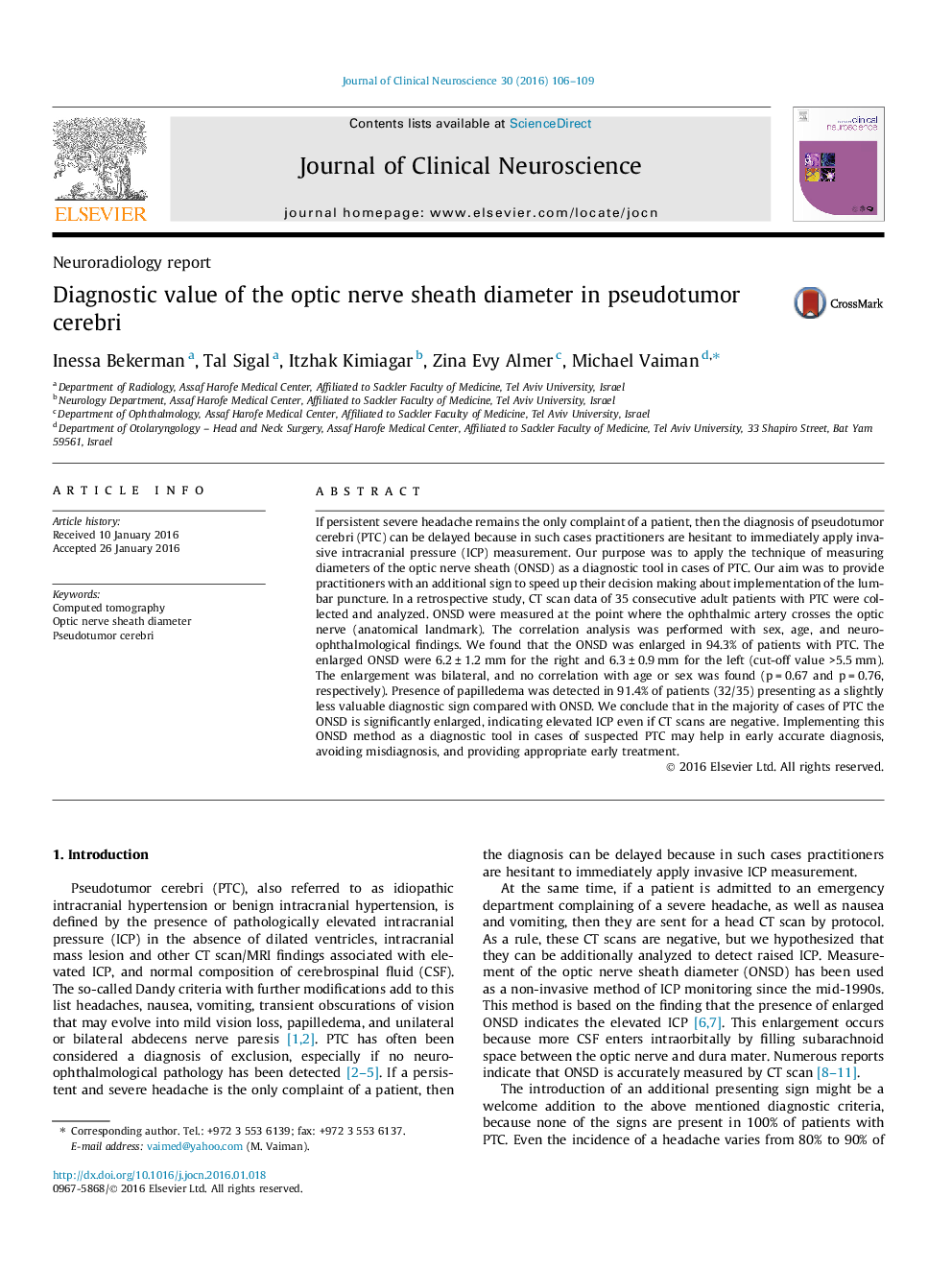| Article ID | Journal | Published Year | Pages | File Type |
|---|---|---|---|---|
| 3058149 | Journal of Clinical Neuroscience | 2016 | 4 Pages |
•Measuring the optic nerve sheath diameter (ONSD) is a diagnostic tool for pseudotumor cerebri (PTC).•The ONSD was enlarged in 94.3% of cases of PTC.•In these cases of PTC the ONSD was enlarged by elevated intracranial pressure.•Practitioners can speedy decide about implementation of the lumbar puncture.•The ONSD diagnostic method in cases of PTC may help in early accurate diagnosis.
If persistent severe headache remains the only complaint of a patient, then the diagnosis of pseudotumor cerebri (PTC) can be delayed because in such cases practitioners are hesitant to immediately apply invasive intracranial pressure (ICP) measurement. Our purpose was to apply the technique of measuring diameters of the optic nerve sheath (ONSD) as a diagnostic tool in cases of PTC. Our aim was to provide practitioners with an additional sign to speed up their decision making about implementation of the lumbar puncture. In a retrospective study, CT scan data of 35 consecutive adult patients with PTC were collected and analyzed. ONSD were measured at the point where the ophthalmic artery crosses the optic nerve (anatomical landmark). The correlation analysis was performed with sex, age, and neuro-ophthalmological findings. We found that the ONSD was enlarged in 94.3% of patients with PTC. The enlarged ONSD were 6.2 ± 1.2 mm for the right and 6.3 ± 0.9 mm for the left (cut-off value >5.5 mm). The enlargement was bilateral, and no correlation with age or sex was found (p = 0.67 and p = 0.76, respectively). Presence of papilledema was detected in 91.4% of patients (32/35) presenting as a slightly less valuable diagnostic sign compared with ONSD. We conclude that in the majority of cases of PTC the ONSD is significantly enlarged, indicating elevated ICP even if CT scans are negative. Implementing this ONSD method as a diagnostic tool in cases of suspected PTC may help in early accurate diagnosis, avoiding misdiagnosis, and providing appropriate early treatment.
